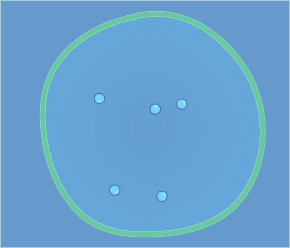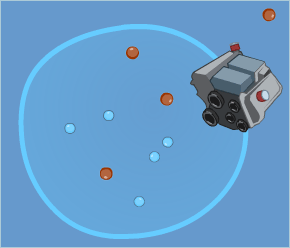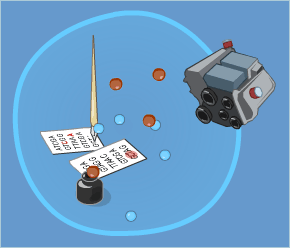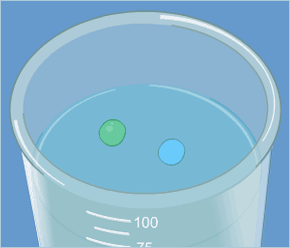

|
What is life, anyway? It's surprisingly hard to define, even for biologists. Yet there is some consensus on the key traits that distinguish a living creature from non-living stuff. Get a sense of what it means to be alive by meeting our VERY simple cartoon microbe. You can also glimpse some of the progress being made in actual efforts to create synthetic life.—Susan K. Lewis Trait #1: Have a Container
Your life-form needs a physical or chemical barrier to make it distinct from its environment. This barrier keeps the "chemistry of life" in a certain spot, rather than allowing it to disperse. It traps essential things—like genes—inside but permits other materials needed for growth and reproduction to enter. The barrier also gives your microbe its own identity, which can persist through time. Synthetic Life Report: Have Containers Been Made? Trait #2: Have an "Engine"
In a simple sense, your microbe needs to be able to "eat"—to metabolize energy from the environment in order to grow, repair itself, and reproduce. The engine shown here is pure fantasy. Living cells today are powered in a variety of ways. Plants use photosynthesis, relying on sunlight to make sugars. The cells in your body have mitochondria that convert the energy in food into ATP, a molecule that fuels most of the cell's functions.
Synthetic Life Report: Have "Engines" Been Made? Trait #3: Have "Instructions" and a "Scribe"
All life today needs its own instruction book. This genetic information guides the initial assembly of the organism as well as directs how it will grow and thrive. It's also critical that the organism have a way to copy these instructions to pass along to future generations. For most life today, including human beings, the basic instruction system is pretty simple: information is encoded in DNA in the sequence of four chemicals known by the letters A, T, G, and C. But then it gets more complicated. The DNA is transcribed into another genetic material called messenger RNA in order to make proteins—the workers and building blocks of the cell.
Synthetic Life Report: Have "Instructions" and a "Scribe" Been Made? Trait #4: Have the Ability to Evolve
If it couldn't adapt to changing environments, life on Earth likely would have petered out early on. That's why most lists of the key traits for life include the capacity to evolve. Like all living cells, our mock microbe had offspring that were not exact clones. As it reproduced, mistakes were made in the copying of its genetic code. Some of the offspring have traits that make them fit to survive and reproduce in their new home, but others have reached an evolutionary dead end.
Synthetic Life Report: Have Evolving Systems Been Made? Okay, It's Not So EasyIf
it were really straightforward to make life in a beaker, we would be surrounded
by synthetic creatures. Since Stanley Miller and Harold Urey conducted their
famous experiment making amino acids from a soup of simpler chemicals in the
early 1950s, hundreds of scientists have tried, essentially, to make life in a
lab. The work has shed light on the steps primitive life may have taken on
Earth four billion years ago. It has also deepened our understanding of how
extraordinarily complex most organisms are today. Researchers remain ever
optimistic, but the first truly synthetic life may be decades away—if it
can be made at all.
|
|||||||||||
|
|
|||||||||||
|
© | Created October 2005 |
|||||||||||